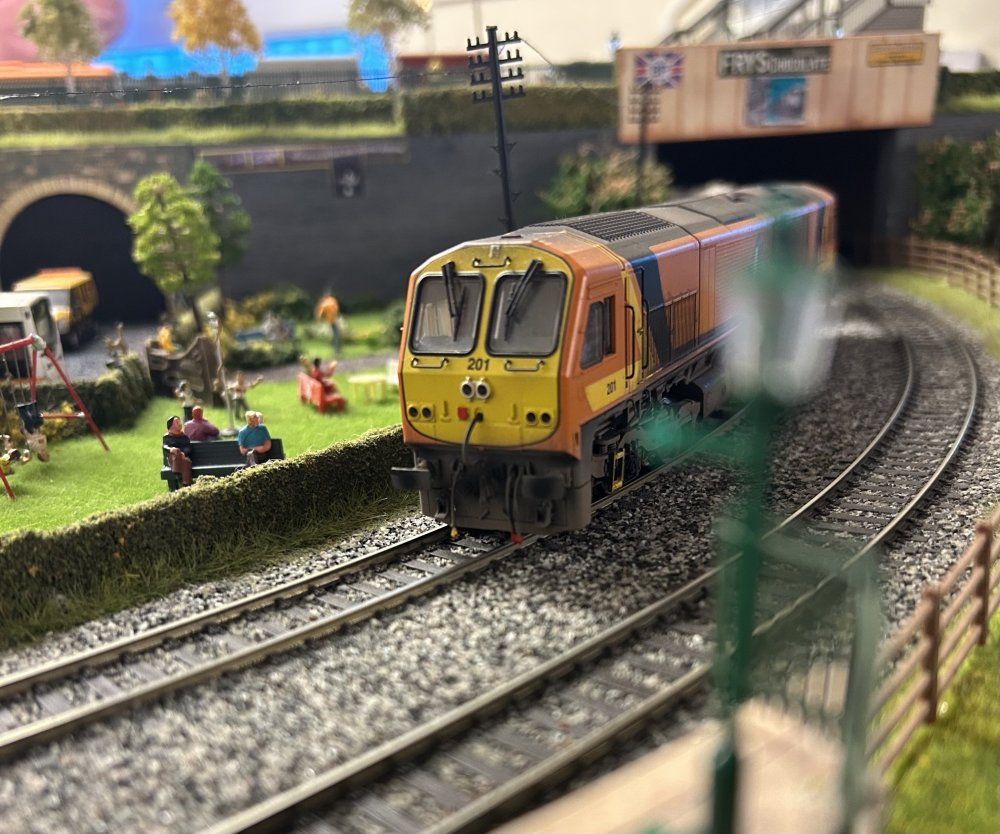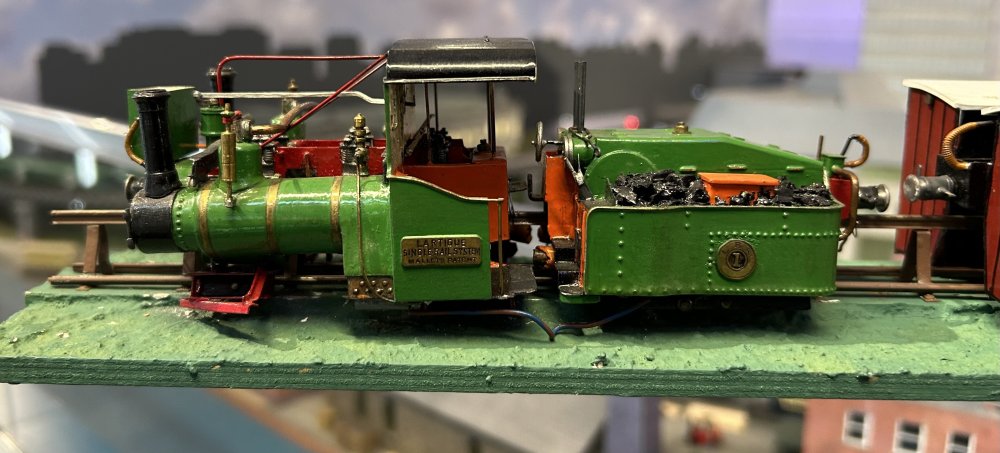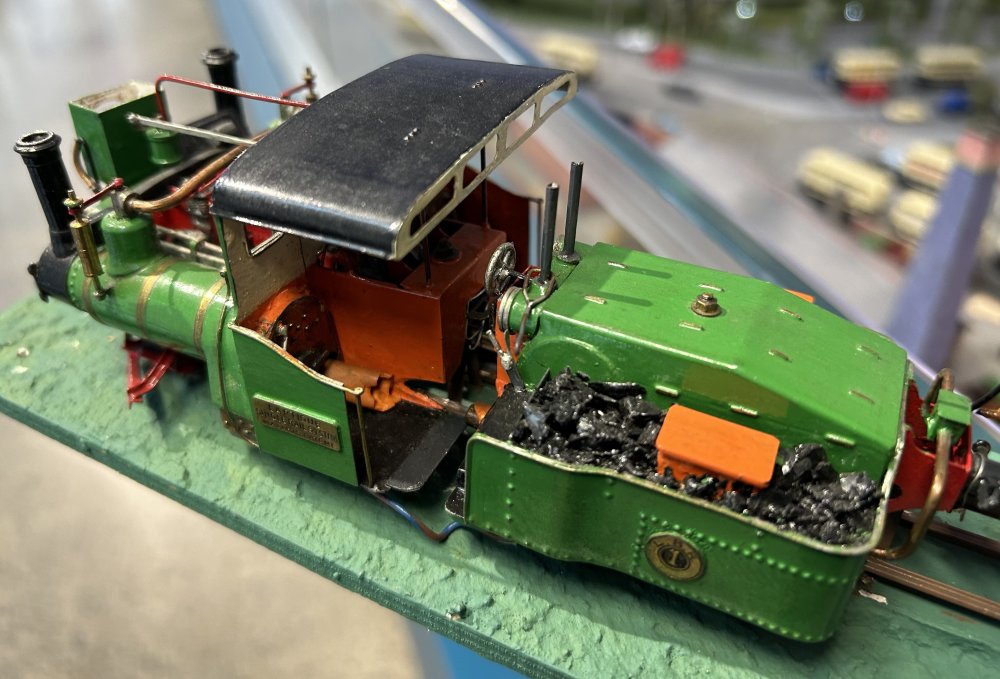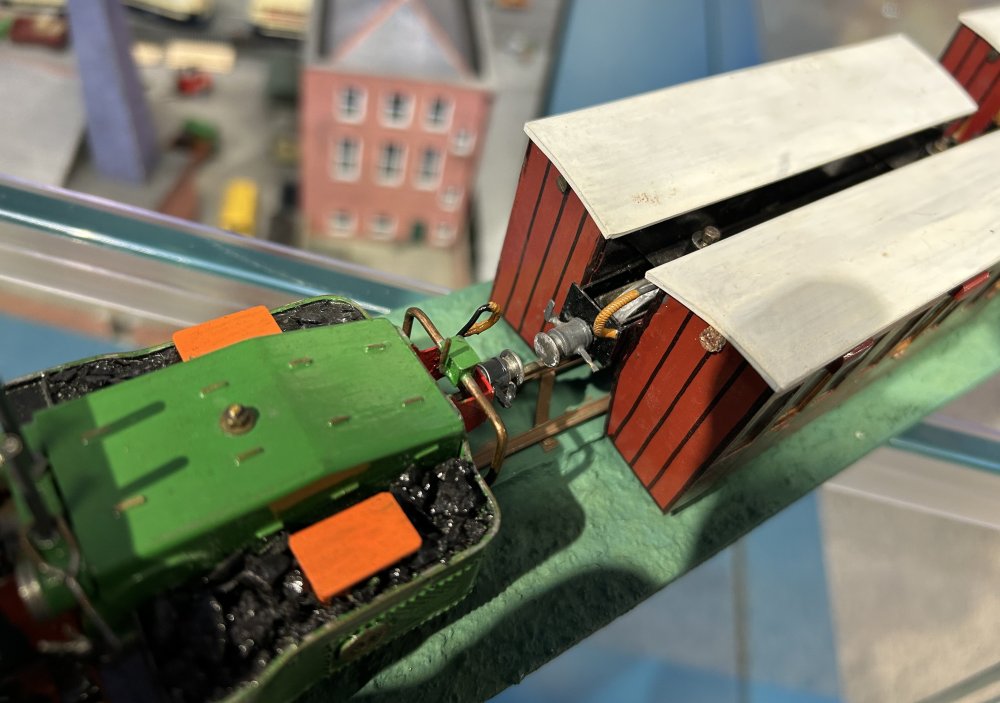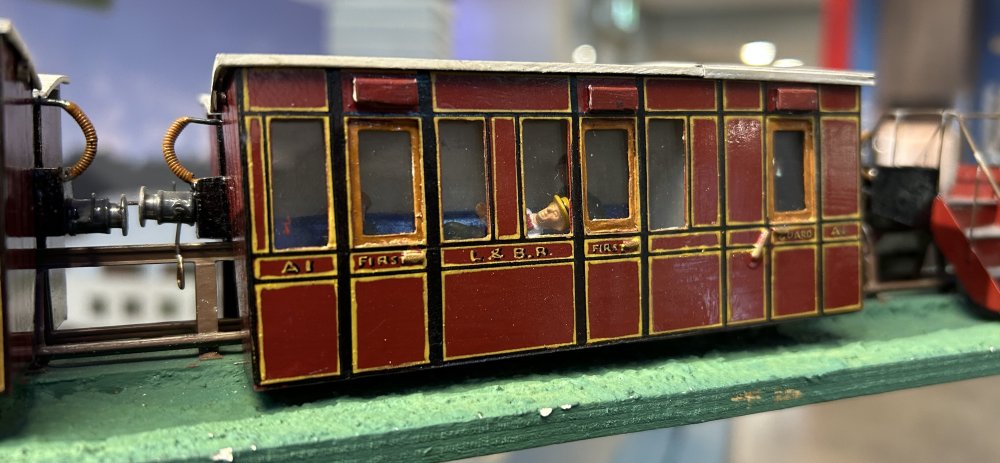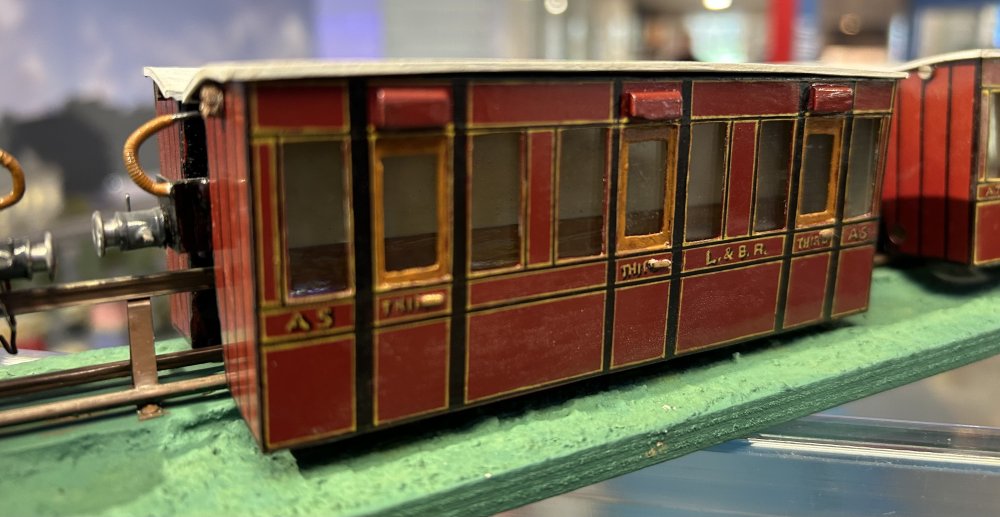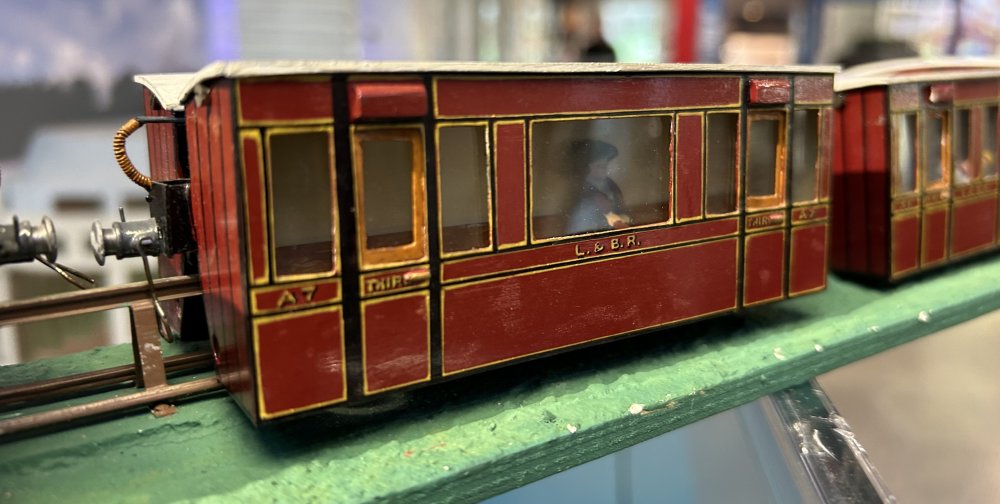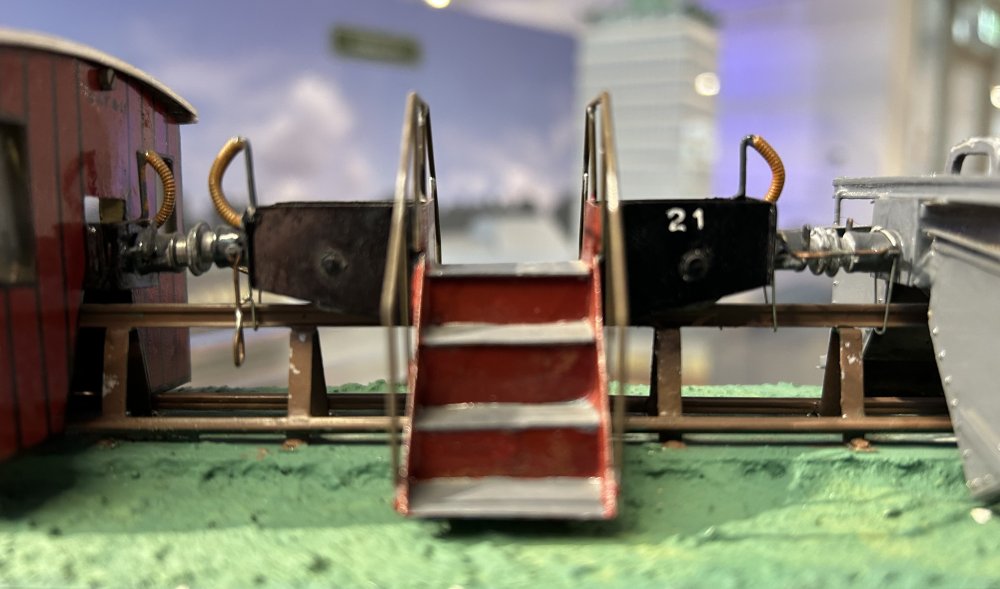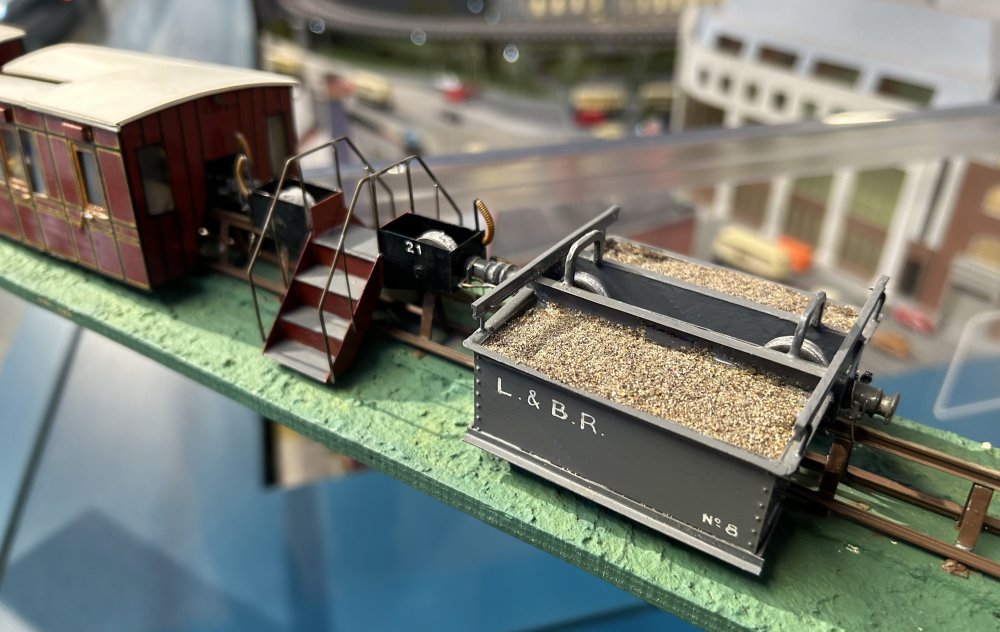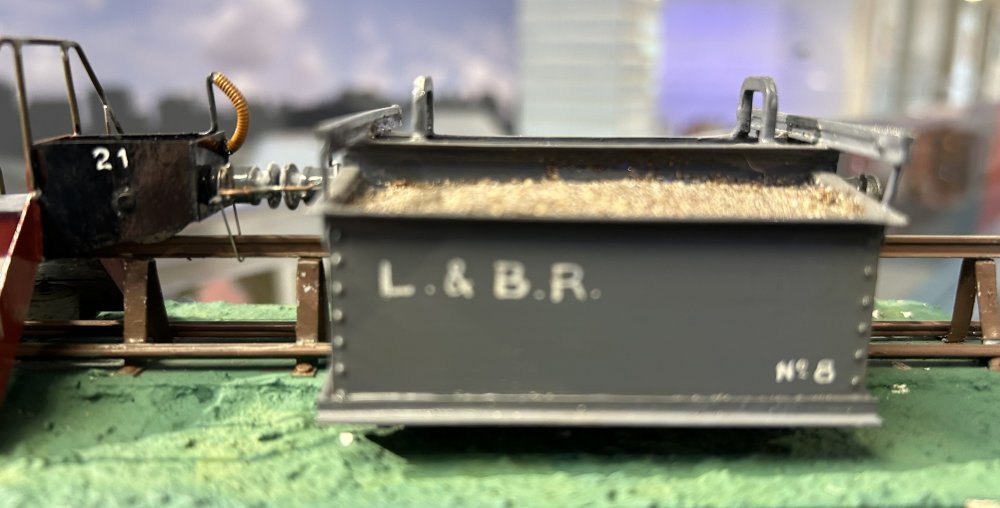-
Posts
15,870 -
Joined
-
Last visited
-
Days Won
393
Content Type
Profiles
Forums
Events
Gallery
Everything posted by jhb171achill
-
OBB HOe layout "Connafeld"
jhb171achill replied to Georgeconna's topic in Continental European Modelling
STUNNING! I love this layout! -
He had been dew to get off the train at Tullamore.....
-
They could do this with relative ease as the sort of place they took “tail traffic” from and to, tended to be major stations, junctions of termini which had a resident shunting engine. This would creep up behind the railcar and detach / attach vans while it was stopped.
-
OBB HOe layout "Connafeld"
jhb171achill replied to Georgeconna's topic in Continental European Modelling
An absolute work of art! -
A Tony Mirolo job, I believe!
-
10:22 was when the down day Sligo got to Mullingar. The Westport table shows nothing going via Mullingar by then - all via Portarlington and Athlone. However the 03:10 Dublin to Ballina Newspaper train arrived via Mullingar in Athlone at 04:54, and Ballina by 06.57.
-
In the 1973 WTT, for example, when mullingar - Athlone was still fully functional, the Galway mails were as follows: Down Day Mail 08:20 ex Connolly 09:29 - 09:36 Mullingar 11:30 Galway Down night Mail Pearse 20:05 Connolly d 20:15 Mullingar 21:24 - 21:31 Galway 23:34 No up day mail working Up Night Mail Galway d. 20:15 Mullingar 23:32 - 23:45 Connolly 01:00 next morning Pearse 01:30 The Sligo services were: Down Day Mail Connolly 09:05 Mullingar 10:22 - 10:26 Described leaving Dublin as "Passenger", but leaving Mullingar as "PAS MAIL"; they possibly switched the bags from the earlier Galway Mail here? Or, it left Dublin with the mail? Sligo 12:40 Down Night Mail Leaves Mullingar as a connection off the Galway at 23:40 Sligo 02:05 next morning No Up Day Mail Up Night Mail Sligo 20:25 (This is the one I travelled on several times, in all cases with a pair of 121s up front). Mullingar 23:21 Await Galway train. Returns to Sligo at 23:40 as above. So - in summary - the morning ones went through, possibly; the evening one was a Galway - Dublin one, and a Sligo - Mullingar one.
-
In steam times, yes! But - see my post below for 1973.
-
Yes, that seemed to be what it was the several times I travelled on it in the 1970s. You had to change at Mullingar and wait the guts of an hour.
-
-
THIS I am learning........................................!
-
I’ve code 75, which means three old coaches I have can’t run till I get better wheels for them….
-
-
Irish Railway News ‘Enterprise Watch’
jhb171achill replied to IrishTrainScenes's topic in General Chat
My favourite RPSI loco! -
141 and 181 Class Fleet Withdrawal and Scrappage Dates
jhb171achill replied to 228RiverOwenboy's topic in General Chat
Interesting stuff! 2011, thus, closed my personal chapter of interest in operational locos. 145 and 150 were personal favourites - the former, as I watched it shunting the Limerick - Sligo goods in Tuam, and the latter on account of a cab run to Cobh, only the 2nd time I ever went there. 190 my favourite 181, as I did Limerick - Ballina behind it, with a train of two laminates and a bockety-looking 4 wheeled tin van not long before that service was withdrawn…… -
Irish Railway News ‘Enterprise Watch’
jhb171achill replied to IrishTrainScenes's topic in General Chat
No blue 4.4.0s on it today? (I remember the last blue 4.4.0 on the Thursdays only train - travelled on it too….) -
This whole layout look so realistic!
-
Pure white when new, but white does tend to age, and it's there some 65 years now!
-
800 is exact, and fresh, as CIE gave it a repaint in standard green (which was still being used on buses and lorries) before it was sent to Belfast. A myth grew up in Belfast that it was (is) in GSR green in the museum….but this is obviously nonsense!
-
I couldn't agree more. As one who has been there the odd time to do a talk, I'm always delighted to go. Good to catch up with the Irish contingent living over there too - you know who you are!
-
Let’s hope that’s not what the RPSI matched the colours for 134 with…. although, by happy coincidence, they both look much the same shade…. Very few nowadays who remember the original 121 livery. It only lasted a few years anyway - several were repainted black’n’tan within only 2 or 3 years. I certainly don’t remember it - my earliest memories of those engines were standard black’n’tan, yet I remember the older green on many another thing.
-
This could vary.... However, 656 and 660 appear to have been working out of Mullingar in the mid 1940s and probably later too. The late Jack O'Neill wrote about firing on a turf train double headed by these two. 666 ("The Beast") spent a period in the 1950s on the DSER. Prior to 1950, they were almost never to be seen off the ex-MGWR lines.
.png.c363cdf5c3fb7955cd92a55eb6dbbae0.png)




